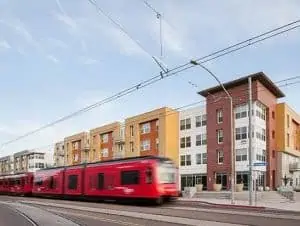

Application Process for $275M in California Grants Opened Jan. 31
A couple of months ago, I wrote about the opportunities and challenges of getting brownfields back into productive use. There are certainly viable strategies for remediation of contaminated property that will make them safe for a range of developments. Of course, the cleanup costs are a significant factor in any project analysis. But the state of California is providing some assistance that could make more brownfield sites pencil out for redevelopment.
I am happy to report in this article that the passage of SB 158 by the California legislature provides $500 million in cleanup funding for brownfields. Approximately $270 million of that total is targeted for grants.
The California Department of Toxic Substance Control (DTSC) administers the Equitable Community Revitalization Grants funded through SB 158. On January 31 of this year, the DTSC started accepting full applications for these grants. The application window closes on April 4, 2022, with award announcements expected on May 31, 2022.
The DTSC gives the highest priority for grants in disadvantaged communities with significant housing needs.
$270 million is a big investment. The USEPA has a similar program, with typical funding for the entire country, of less than $100 million (https://www.epa.gov/newsreleases/epa-announces-selection-151-communities-receive-665-million-brownfields-assessment-and). Since DTSC started accepting applications at the end of January, nonprofits, public agencies, municipalities, tribes, and private developers must act quickly.
Eligible entities may apply for ECRG grants for properties they own or control in high poverty areas with a CalEnviroScreen score of 75 percent or more for reuse. DTSC will also accept applications outside of the CalEnviroScreen score of 75%+ if the proposed reuse provides significant community benefit.
As I outlined in my previous article, it is important to have a risk management strategy that includes a thorough understanding of the environmental issues on the site and how those issues can impact your redevelopment plans and bottom line. Environmental and legal support experienced in identifying, anticipating, and managing risks on brownfields is critical to success.
There are an estimated 200,000 brownfields currently identified in California, many of which are useful for housing after remediation. Many of these sites are in the urban core and perfectly fit infill strategies for solving the housing crisis by reducing commute times and related greenhouse gases.
An example of such a project is COMM22 in San Diego, developed by BRIDGE Housing, in which SCS provided environmental oversight during remediation. COMM22 is a mixed-use, mixed-income, transit-oriented development located at Commercial and 22nd streets in San Diego.

The site where COMM22 stands today was a former San Diego Unified School District vehicle maintenance and general maintenance facility. The site included leaking underground storage tanks and fill soils containing various metals, including lead.
After successful remediation, the parcel today hosts 211 affordable housing units, including apartments for low-income seniors (including HUD-subsidized units), supportive housing for youth transitioning out of the foster care system, and eleven townhomes for low- and moderate-income families.
Many more badly needed projects, like COMM22, could become a reality thanks to SB 158. If you have a brownfield in mind that fits the criteria or have questions about the grant application process, contact the Center for Creative Land Reuse (www.cclr.org). CCLR partners with the DTSC to give free assistance in applying for funding.

Learn more about funding and land remediation here.